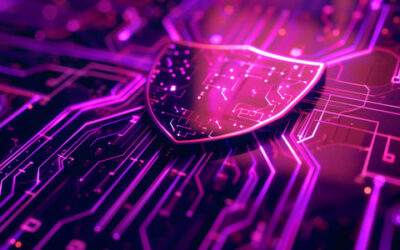Flawless Displays: How AI is Revolutionizing OLED Mura Defect Detection
In the rapidly evolving field of display technology, ensuring impeccable screen quality is paramount. Mura defects, characterized by irregular brightness or color variations, pose significant challenges in OLED display manufacturing. Traditional inspection methods often fall short in detecting these subtle imperfections. This comprehensive blog post delves into the innovative application of region-based machine learning techniques for effective Mura defect detection. By exploring the integration of advanced algorithms, dataset generation, and adversarial training, we highlight a robust approach that achieves superior accuracy and efficiency in identifying and classifying Mura defects.

Organic Light Emitting Diode (OLED) displays have revolutionized the visual experience with their superior color reproduction, contrast ratios, and flexibility. However, maintaining the high-quality standards expected of OLED screens is a complex endeavor, primarily due to the occurrence of Mura defects. These defects manifest as irregularities in brightness or color, detracting from the overall display quality and user experience.
Traditional inspection methods, heavily reliant on human visual assessment, are often inconsistent and inefficient, especially when dealing with low-contrast images where Mura defects lack distinct edges. The subjective nature of human inspection introduces variability, and the sheer volume of displays produced necessitates a more scalable solution.
Enter region-based machine learning – a sophisticated approach that combines the precision of machine learning algorithms with the specificity of region-based analysis. This methodology not only automates the detection process but also enhances accuracy by focusing on localized regions within the display, effectively identifying subtle defects that might elude traditional inspection techniques.
Understanding Mura Defects
The term Mura originates from the Japanese word for “unevenness” or “blemish,” aptly describing the visual inconsistencies these defects introduce. In the context of OLED displays, Mura defects are characterized by non-uniform luminance or chrominance, appearing as spots, lines, or regions with noticeable brightness or color deviations.
These defects can be broadly categorized into:
- Spot Mura: Localized spots with varying brightness or color.
- Line Mura: Linear imperfections, either horizontal or vertical, disrupting the uniformity of the display.
- Region Mura: Larger areas exhibiting uneven brightness or color, affecting a significant portion of the display.
The detection of Mura defects is particularly challenging due to their subtle nature and the low-contrast images in which they appear. Traditional image processing techniques often struggle to identify these defects, necessitating the adoption of more advanced, machine learning-based approaches.
The Role of Machine Learning in Defect Detection
Machine learning has emerged as a transformative tool in various industries, and its application in defect detection is no exception. By training algorithms on vast datasets of defective and non-defective images, machine learning models can learn to identify patterns and anomalies indicative of defects.
In the realm of OLED Mura defect detection, machine learning offers several advantages:
- Automation: Reduces reliance on manual inspection, increasing throughput and consistency.
- Precision: Enhances the ability to detect subtle defects that may be imperceptible to the human eye.
- Scalability: Easily adapts to different display sizes and resolutions without extensive reconfiguration.
However, the success of machine learning models heavily depends on the quality and diversity of the training data, as well as the robustness of the algorithms employed.
Region-Based Machine Learning Approach
The region-based machine learning approach focuses on analyzing specific regions within an image to detect defects, rather than evaluating the image as a whole. This method is particularly effective for identifying localized imperfections like Mura defects.
A seminal study by Janghwan Lee introduced a comprehensive system for detecting white spot and horizontal line Mura defects using a region-based machine learning model. The system comprises four core components:
- Mura Candidate Detector: Utilizes computer vision and image processing algorithms to identify potential defect locations within the display.
- Candidate Region Extractor: Generates image patches centered around the identified candidate locations for detailed analysis.
- Feature Extractor: Extracts relevant statistical and textural features from each image patch to characterize the potential defects.
- Classifier: Employs Support Vector Machines (SVM) to classify the extracted features as defective or non-defective regions.
This structured approach allows for precise localization and classification of Mura defects, significantly improving detection accuracy.
%
inspection time
Traditional human visual inspection has an accuracy of around 75%, while AI-based defect detection models achieve over 95% accuracy in identifying OLED Mura defects. Source: Region-Based Machine Learning for OLED Mura Defects Detection, Samsung Display America Lab, 2021
%
accuracy
Machine learning-based Mura defect detection reduces inspection time by up to 60%, improving production efficiency.
Source: International Journal of Machine Vision and Applications, 2022
Dataset Generation and Challenges
The effectiveness of any machine learning model is intrinsically linked to the quality of the dataset used for training. In the context of Mura defect detection, several challenges arise:
- Noisy Labels: Inconsistencies in labeling, often due to subjective human judgment, can introduce noise, adversely affecting model performance.
- Inconsistent Data: Variations in data acquisition conditions, such as lighting and camera settings, can lead to inconsistencies that complicate the training process.
To address these challenges, Lee proposed the creation of a “golden dataset,” meticulously curated and relabeled by multiple researchers to ensure consistency and accuracy. This dataset serves as a reliable foundation for training robust machine learning models.
Adversarial Training for Enhanced Robustness
Adversarial training is a technique used to improve the robustness of machine learning models by exposing them to challenging or misrepresented data during the training process. In the case of Mura defect detection, adversarial training involves iteratively refining the model by:
1. Training the Model
Using the golden dataset to establish a baseline model.
2. Evaluating Performance
Testing the model on a separate evaluation dataset to identify misclassifications or detection failures.
Threshold Adjustment for Precision and Recall Optimization
One of the key challenges in defect detection is balancing precision and recall. While a high recall rate ensures that most defects are detected, it may come at the cost of lower precision, leading to false positives. Conversely, optimizing for high precision might result in missed defects.
To address this, Lee implemented a threshold adjustment mechanism in the SVM classifier, leveraging confidence scores derived from classification results. By dynamically adjusting the decision threshold, the system can be fine-tuned to prioritize recall (minimizing missed defects) or precision (reducing false alarms) based on operational requirements
Real-World Implementation and Results
Applying the region-based machine learning model to real OLED panel images from a manufacturing line yielded impressive results. Using a golden dataset and adversarial training techniques, the model achieved:
- 100% recall rate: Ensuring that no defects were overlooked.
- Over 90% precision: Minimizing false positives and ensuring accurate defect classification.
- Improved inspection efficiency: Reducing the reliance on manual inspections, streamlining quality control, and enhancing production throughput.
Comparing with Traditional Methods
| Method | Accuracy | Scalability | Automation | Human Dependency |
| Visual Inspection | Low | Low | No | High |
| Conventional Image Processing | Moderate | Moderate | Partial | Moderate |
| Region-Based Machine Learning | High | High | Yes | Low |
The Future of Machine Learning in Display Manufacturing
The success of region-based machine learning in OLED defect detection signals a broader shift toward AI-driven quality control in display manufacturing. Future advancements may include:
- Deep Learning Integration: Enhancing feature extraction with convolutional neural networks (CNNs) for more robust defect detection.
- Real-Time Processing: Optimizing algorithms for faster defect detection in high-speed production lines.
- Edge AI Deployment: Implementing lightweight AI models directly on inspection hardware for on-the-fly analysis.
- Multi-Modal Inspection Systems: Combining machine vision with AI-driven decision-making for holistic defect classification.
Conclusion
The application of region-based machine learning for OLED Mura defect detection represents a significant advancement in display quality assurance. By addressing the limitations of traditional inspection methods and leveraging AI-driven solutions, manufacturers can achieve higher precision, consistency, and efficiency in defect detection.
As machine learning continues to evolve, its role in automated quality control will only expand, paving the way for smarter, more reliable manufacturing processes. With continuous refinements in AI models, dataset curation, and real-time processing capabilities, the future of display technology quality assurance looks brighter than ever.
References
- Lee, J. Region-Based Machine Learning for OLED Mura Defects Detection. Samsung Display America Lab.
- Tseng, D., Lee, Y., & Shie, C. LCD Mura Detection with Multi-Image Accumulation and Multi-Resolution Background Subtraction. IJICIC, 2012.
- Weimer, D., Thamer, H., & Scholz-Reiter, B. Learning Defect Classifiers for Textured Surfaces Using Neural Networks. Procedia CIRP, 2013.
- Asano, T., Ishiguro, K., & Kondoh, T. Image Quality Evaluation for Electronic Displays Based on Fourier Spectrum Analysis. MECATRONICS-REM, 2016.
- Park, Y., & Kweon, I. S. Ambiguous Surface Defect Image Classification of AMOLED Displays in Smartphones. IEEE Transactions on Industrial Informatics, 2016.
- Girshick, R., Donahue, J., Darrell, T., & Malik, J. Rich Feature Hierarchies for Accurate Object Detection and Semantic Segmentation. IEEE Conference on CVPR, 2014.
- Uijlings, J., van de Sande, K., Gevers, T., & Smeulders, A. Selective Search for Object Recognition. IJCV, 2013.
- Kumar, S. P. S., & Dharun, V. S. Extraction of Texture Features Using GLCM and Shape Features Using Connected Regions. IJET, 2017.
Wanna know more? Let's dive in!
Driving the Future of EV Batteries: Advanced BMS Technologies and Trends
[dsm_gradient_text gradient_text="Driving the Future of EV Batteries: Advanced BMS Technologies and Trends" _builder_version="4.27.0" _module_preset="default" header_font="Questrial|||on|||||" header_text_align="center" header_letter_spacing="5px"...
ISO 26262: Ensuring Functional Safety in Automotive Systems
[dsm_gradient_text gradient_text="ISO 26262: Ensuring Functional Safety in Automotive Systems" _builder_version="4.27.0" _module_preset="default" header_font="Questrial|||on|||||" header_text_align="center" header_letter_spacing="5px" filter_hue_rotate="100deg"...
User-friendly requirements verification in the context of ISO26262
[dsm_gradient_text gradient_text="Agile Requirements Engineering in the Automotive Industry: Challenges and Solutions at Scale" _builder_version="4.27.0" _module_preset="default" header_font="Questrial|||on|||||" header_text_align="center" header_letter_spacing="5px"...
Maintaining ISO 27001 Compliance: Tips for Long-Term Success
[dsm_gradient_text gradient_text="Maintaining ISO 27001 Compliance: Tips for Long-Term Success" _builder_version="4.27.0" _module_preset="default" header_font="Questrial|||on|||||" header_text_align="center" header_letter_spacing="5px" filter_hue_rotate="100deg"...
ISO 27001 Explained: What It Is and Why Your Business Needs It
[dsm_gradient_text gradient_text="ISO 27001 Explained: What It Is and Why Your Business Needs It" _builder_version="4.27.0" _module_preset="default" header_font="Questrial|||on|||||" header_text_align="center" header_letter_spacing="5px" filter_hue_rotate="100deg"...
The Road to ISO 27001 Certification: A Step-by-Step Guide
[dsm_gradient_text gradient_text="The Road to ISO 27001 Certification: A Step-by-Step Guide" _builder_version="4.27.0" _module_preset="default" header_font="Questrial|||on|||||" header_text_align="center" header_letter_spacing="5px" filter_hue_rotate="100deg"...
ISO 27001 vs. Other Security Standards
[dsm_gradient_text gradient_text="ISO 27001 vs. Other Security Standards: Which One Is Right for You?" _builder_version="4.27.0" _module_preset="default" header_font="Questrial|||on|||||" header_text_align="center" header_letter_spacing="5px"...
Top Psychological Hazards Identified by ISO 45003—and How to Address Them
[dsm_gradient_text gradient_text="Top Psychological Hazards Identified by ISO 45003" _builder_version="4.27.0" _module_preset="default" header_font="Questrial|||on|||||" header_text_align="center" header_letter_spacing="5px" filter_hue_rotate="100deg"...
How to Implement ISO 45003: A Step-by-Step Guide
[dsm_gradient_text gradient_text="How to Implement ISO 45003: A Step-by-Step Guide" _builder_version="4.27.0" _module_preset="default" header_font="Questrial|||on|||||" header_text_align="center" header_letter_spacing="5px" filter_hue_rotate="100deg" hover_enabled="0"...
Common Pitfalls in Applying ISO 31000 And How to Avoid Them
[dsm_gradient_text gradient_text="Common Pitfalls in Applying ISO 31000 And How to Avoid Them" _builder_version="4.27.0" _module_preset="default" header_font="Questrial|||on|||||" header_text_align="center" header_letter_spacing="5px" filter_hue_rotate="100deg"...
How to Integrate ISO 31000 into Your Organization’s Culture
[dsm_gradient_text gradient_text="How to Integrate ISO 31000 into Your Organization’s Culture" _builder_version="4.27.0" _module_preset="default" header_font="Questrial|||on|||||" header_text_align="center" header_letter_spacing="5px" filter_hue_rotate="100deg"...
Top Benefits of Implementing ISO 31000 in Your Business
[dsm_gradient_text gradient_text="Top Benefits of Implementing ISO 31000 in Your Business" _builder_version="4.27.0" _module_preset="default" header_font="Questrial|||on|||||" header_text_align="center" header_letter_spacing="5px" filter_hue_rotate="100deg"...












